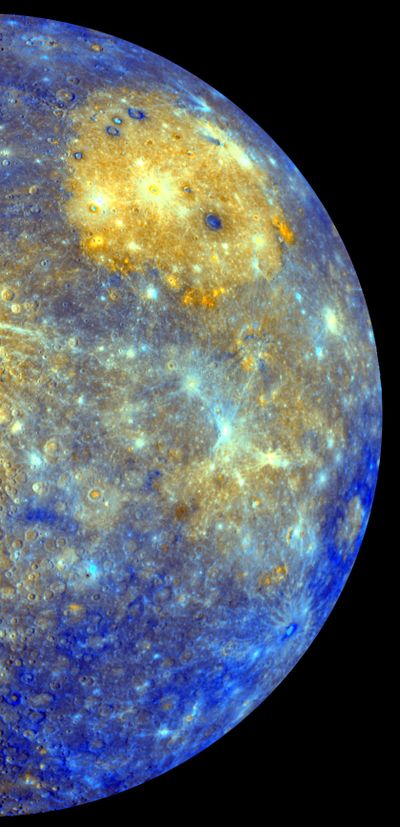NASA spacecraft orbiting Mercury
Messenger should begin sending pictures in April

WASHINGTON – For the first time, Earth has a regular orbiting eye-in-the-sky spying on the solar system’s smallest and strangest planet, Mercury.
NASA’s spacecraft called Messenger successfully veered into a pinpoint orbit Thursday night after a 6 1/2-year trip and 4.9 billion miles and tricky maneuvering to fend off the gravitational pull of the sun. It is the fifth planet in our solar system that NASA has orbited, in addition to the Earth and the moon.
“It was right on the money,” Messenger’s chief engineer, Eric Finnegan, said. Messenger is in orbit that brings it as close as 120 miles above the planet’s surface. “This is as close you can possibly get to being perfect.”
“We are elated,” Finnegan said. “There’s a lot of work left to be done, but we are there.”
Mercury is not only difficult to get to, but it has some of the most extremes in the solar system. Temperatures there swing wildly by 1,100 degrees. While it gets up to 800 degrees on the planet closest to the sun, it also is so cold and dark in some craters that the temperatures don’t get above 300 degrees below zero. Radar even shows that there is likely frozen ice in those craters, something Messenger will try to confirm.
In the 1970s, NASA sent a spacecraft, Mariner, whizzing by Mercury, but only got pictures of less than half of the tiny rock.
A NASA Twitter account under Messenger’s name “exchanged tweets” with Voyager 2, one of NASA’s oldest and most-distant spacecraft. Voyager 2, launched in 1977 and now at the edge of the solar system, tweeted good luck and Messenger “answered” with a tweet: “Many thanks! Cold out there? Kinda warm where I am.”
Messenger, which cost NASA $446 million, was launched in 2004. Next month it should start transmitting pictures and investigate Mercury’s mysterious magnetic field and unusual density.